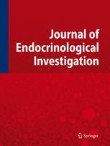
ΩτοΡινοΛαρυγγολόγος Medicine by Alexandros G. Sfakianakis,Anapafseos 5 Agios Nikolaos 72100 Crete Greece,00302841026182,00306932607174,
Translate
Ετικέτες
Τρίτη 15 Σεπτεμβρίου 2020
Gender susceptibility to COVID-19
Gender susceptibility to COVID-19: a review of the putative role of sex hormones and X chromosome:


Εγγραφή σε:
Σχόλια ανάρτησης (Atom)
Αρχειοθήκη ιστολογίου
-
►
2023
(278)
- ► Φεβρουαρίου (139)
- ► Ιανουαρίου (139)
-
►
2022
(1962)
- ► Δεκεμβρίου (107)
- ► Σεπτεμβρίου (158)
- ► Φεβρουαρίου (165)
- ► Ιανουαρίου (163)
-
►
2021
(3614)
- ► Δεκεμβρίου (152)
- ► Σεπτεμβρίου (271)
- ► Φεβρουαρίου (64)
- ► Ιανουαρίου (357)
-
▼
2020
(3279)
- ► Δεκεμβρίου (396)
-
▼
Σεπτεμβρίου
(157)
- Medicine by Alexandros G. Sfakianakis
- Medicine by Alexandros G. Sfakianakis
- Medicine by Alexandros G. Sfakianakis
- Medicine by Alexandros G. Sfakianakis
- International Journal of Molecular Sciences
- Journal of Personalized Medicine
- International Journal of Environmental Research ...
- Antibiotics
- Phosphatidylinositol-3,4,5-trisphosphate d
- Diagnosis and treatment of mi
- Latest Results for Current Infectious Disease Re...
- Experimental Physiology
- Laryngorhinootologie
- Artificial Cells, Nanomedicine, and Biotechnology
- pubmed: "world neurosurg"[jo...
- Head and Neck
- Proteasome Activity in the Plasma as a Novel Bioma...
- Medially displaced common and internal carotid art...
- Abducens Nerve Schwannoma: First Case to Be Treate...
- αB-crystallin : ,in proliferative diabeti...
- severe pharyngeal pain after alcohol intoxication....
- Diagnostic Criteria of Recurrent Acute Rhinosinusitis
- AVAtar ('analysis and visualization of alteration ...
- Bilateral HPV16-Positive, p16-Positive Tonsil Tumo...
- Cellular uptake of boron-10 (10B) atoms induces ca...
- CERE-120 Prevents Irradiation-Induced Hypofunction...
- an antimicrobial peptide (AMP), aurein 1.2, which ...
- Several immune-mediated disorders have been descri...
- Sinonasal mucosal melanoma
- Estrogen receptor α is involved in the regulation ...
- locally advanced differentiated thyroid cancer : t...
- Inflammatory myofibroblastic tumor of the neck wit...
- Oncocytic Cysts of the Nasopharynx
- Acquired Hemophilia A Presenting as Massive Postop...
- Giant Parotid Pleomorphic Adenoma with Atypical Hi...
- An extragonadal germ cell tumor with dermatomyosit...
- Pinna high grade trichoblastic carcinoma
- Coconut Oil as a Novel Approach to Managing Radiat...
- Cochlear Implantation in a Patient with a Novel PO...
- otitis media with ANCA-associated vasculitis.
- Unknown Primary.: Traditional diagnostic method...
- Recombinant Adenovirus-p53 Gene Therapy....the fir...
- Leiomyosarcoma of the Nasal Cavity.
- Mobile phones and "inattention" injuries: the risk...
- Models of vestibular semicircular canal afferent n...
- Autofluorescence-Based Detection of the Parathyroi...
- Airway Obstruction during Sleep due to Diaphragm P...
- Laryngopharyngeal reflux: hoarseness, clearing of ...
- The duration of upper esophageal sphincter opening...
- actinomycosis in the tongue
- Dexamethasone, pro‐resolving lipid mediators and r...
- Efficacy of unilateral hemilaminectomy for intrasp...
- Bloody Cerebrospinal Fluid Drainage.
- sleep‐related epilepsies and comorbid sleep disorders
- the duration of SARS‐CoV‐2 viral shedding
- lncRNA and miRNA expression in fetal skeletal muscle
- Predictive models for stage and risk classificatio...
- Flavoured water consumption alters pharmacokinetic...
- Simultaneous maxillary and mandibular reconstructi...
- Treatment of secondary scrotal and lower extremity...
- Diagnosis of cancer at early stages based on the m...
- Associations of General Obesity and Central Obesit...
- mid‐treatment nodal response in oropharyngeal squa...
- Mortality and cause of death in patients with trac...
- Immediate and partial neural dysfunction after thy...
- Synergistic effects of combined treatment with ult...
- An outbreak of relapsing fever unmasked by microbi...
- Life history and socioecology of infancy
- Medicine by Alexandros G. Sfakianakis
- Medicine by Alexandros G. Sfakianakis
- Medicine by Alexandros G. Sfakianakis
- Medicine by Alexandros G. Sfakianakis
- International Journal of Molecular Sciences
- International Journal of Molecular Sciences
- Antibiotics
- Pinitol attenuates LPS-induced
- Rituximab in adult minimal change disease and foca...
- The pathophysiology of polymyalgia rheumatica
- Mucosal vitamin D signaling in inflammatory bowel ...
- New insight into the role of exosomes in vitiligo
- Failed Back Surgery Syndrome (FBSS)
- Bedeutung von CI-Nutzungsverhalten und CI-Anpassun...
- Allogeneic hematopoietic stem cell transplant
- Wireless EEG for Fast Prep and Easy Use
- Breast radiologic complete response
- Motor performance and back pain in children and ad...
- Loneliness in pregnant and postpartum people
- Tissue-Achievable Concentration of Cefazolin again...
- Segmental Bone Reconstruction by Octacalcium Phosp...
- Metformin Reduces Thyroid Cancer Tumor Growth in t...
- Acute Renal Failure after Abdominal Trauma: Renal ...
- The evolution of phenotypic plasticity in response...
- OVOL1/2: Drivers of Epithelial Differentiation in ...
- Disuse of the paretic hand after stroke is encoura...
- ► Φεβρουαρίου (382)
- ► Ιανουαρίου (84)
-
►
2019
(11718)
- ► Δεκεμβρίου (265)
- ► Σεπτεμβρίου (545)
- ► Φεβρουαρίου (1143)
- ► Ιανουαρίου (744)
-
►
2017
(2)
- ► Φεβρουαρίου (1)
- ► Ιανουαρίου (1)
Δεν υπάρχουν σχόλια:
Δημοσίευση σχολίου